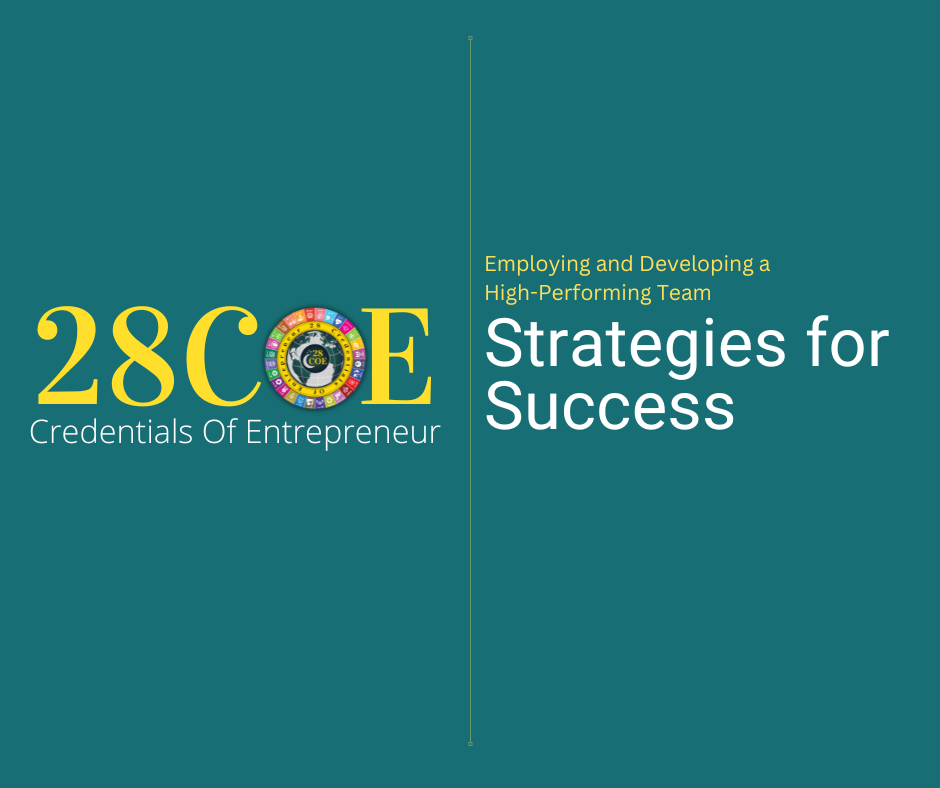Employing and Developing a High-Performing Team: Strategies for Success
In today’s rapidly evolving business landscape, the success of an organization hinges on its ability to attract, employ, and develop a high-performing team. Talent is undoubtedly one of the most valuable assets of any company, and investing in your employees is not only a sound business strategy but also a moral imperative. In this blog, we will explore key strategies for employing and developing a team that can drive innovation, productivity, and long-term success.
- The Art of Recruitment
Building a high-performing team begins with effective recruitment. Here’s how to do it:
- Define Your Ideal Candidate: Before you start the hiring process, clearly define the qualifications, skills, and personality traits you’re looking for in a candidate. This will guide your search and help you find individuals who align with your company’s culture and goals.
- Diverse Hiring: Embrace diversity in your hiring process. Diverse teams bring varied perspectives and can lead to more innovative solutions and better decision-making.
- Thorough Interviews: Conduct thorough interviews that go beyond resumes and cover letters. Ask about their experiences, problem-solving skills, and how they handle adversity.
- Onboarding for Success
Once you’ve found the right candidates, it’s crucial to provide a strong onboarding process to set them up for success:
- Clear Expectations: Ensure that new hires understand their roles and responsibilities from day one. Provide them with a job description and performance expectations.
- Mentorship and Training: Pair new employees with experienced mentors who can guide them in their early days. Additionally, invest in ongoing training and development opportunities to help them grow in their roles.
- Company Culture: Introduce new hires to your company’s culture and values. This will help them integrate into the team more seamlessly.
- Continuous Learning and Development
Employee development is an ongoing process that directly impacts their performance and job satisfaction:
- Personalized Development Plans: Work with each team member to create a personalized development plan that aligns with their career goals and the company’s needs.
- Skill Building: Provide opportunities for employees to acquire new skills, whether through workshops, courses, or on-the-job training.
- Feedback and Evaluation: Conduct regular performance reviews and provide constructive feedback. Recognize achievements and address areas for improvement.
- Fostering a Collaborative Environment
High-performing teams thrive in a collaborative atmosphere:
- Open Communication: Encourage open and honest communication among team members. This fosters trust and transparency.
- Team-Building Activities: Organize team-building activities to strengthen relationships and encourage camaraderie.
- Inclusive Leadership: Lead by example. Be an inclusive leader who values diverse perspectives and fosters a culture of collaboration.
- Recognizing and Rewarding Excellence
Finally, it’s essential to recognize and reward excellence:
- Performance-Based Incentives: Implement a rewards system that recognizes outstanding performance. This can include bonuses, promotions, or special recognition.
- Employee Recognition Programs: Develop programs that celebrate and reward employees’ contributions and milestones.
- Employee Well-being: Show concern for your employees’ well-being by offering work-life balance initiatives, health benefits, and mental health support.
Conclusion
Employing and developing a high-performing team is an ongoing process that requires dedication and a people-first approach. By focusing on recruitment, onboarding, continuous learning, collaboration, and recognition, you can create a work environment where employees thrive, contribute their best, and drive your organization to success. Remember, your team is not just an expense; they are your most significant asset, and nurturing their growth is an investment in your company’s future.

